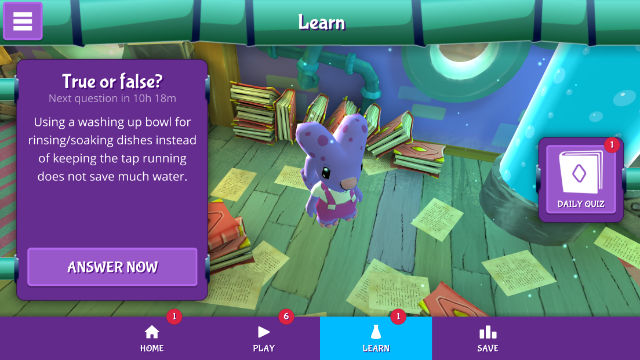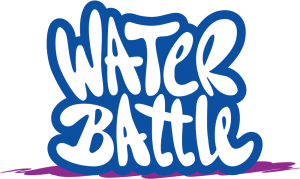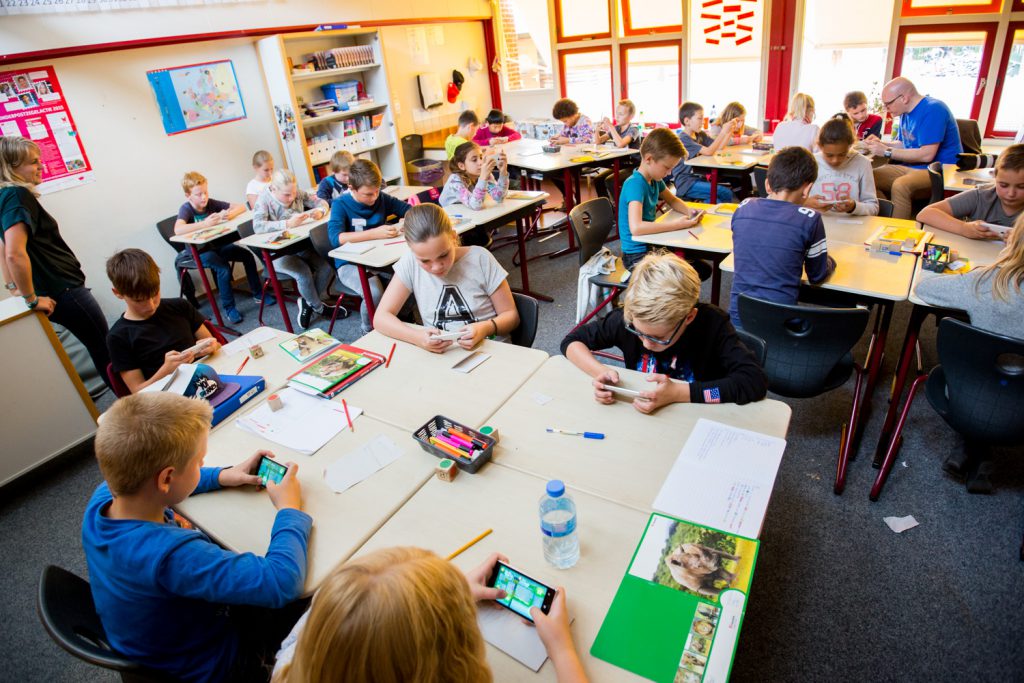Kids grow up with games. They love games! A serious game is an effective method of teaching children about water saving. The Water Battle is a serious game that introduces children to water saving and responsible water usage in a playful way. The game can be integrated into a school’s curriculum. How do you implement it? And how do you get children excited about the game? Let’s discuss it.
What is the Water Battle?
At home, we use a lot of fresh water, especially in the morning and evening. During morning peak hours, the water pumps have to work extra hard to meet demand. For water production, this situation leads to excessive energy consumption and low pressure on the water pipes. If we manage to spread the water consumption more, we can save energy and prevent potential water supply interruptions. Because, yes: clean drinking water is in fact limited!
The Water Battle is a serious game that aims to change water consumption patterns in the household. As part of the game concept, the family makes a water-saving pledge. For children, the task is to ensure the habitat of the game character, Dewie, is not flooded. The child does this by progressing through the different levels and answering water-conservation quiz questions correctly.
An elementary school can use the game as part of its curriculum. The competition element in the game creates excitement in and between schools. Water Battle is an effective, playful way to educate children about using water sustainably.
Now you may be wondering how to use the Water Battle in the classroom. In this article, we will tell you how to integrate the game into a class curriculum. We will also explain how to get children excited about the game and who’s responsible for the success of the game.
Introducing Water Battle and getting children excited
Children like games, but that doesn’t mean that every child is enthusiastic about them. Therefore, an opening event is a good strategy to introduce the game to your target players.
At the opening event, the most important thing is of course to show the game to the children, but you also tell them why they need to use water wisely. You can also explain how the game will be played and how it is linked to making them responsible water custodians.
The game also has a ‘leaderboard’ that ignites competition. Schools can tap into this feature to increase engagement between students. For example, there could be a reward for the student whose family saved the most water during the intervention period. You could also have an inter-grade competition for the class that collectively saved to most water at home. With this, you foster teamwork, where students in a class work together to stay on top of the leaderboard.
Using the Water Battle in the classroom
A school can decide for itself how long to use the Water Battle. For measurable effects, we recommend using the game for at least 2 months. Additionally, the longer children are involved in the game, the greater the chance that the child (and the parents) will be intrinsically motivated to save water.
The Water Battle game comes with an educational package containing all sorts of ideas and assignments for incorporating the game into a class curriculum. The game does not necessarily have to be a separate subject. Note that one of the goals of the Water Battle is to teach water conservation in schools, so teachers need to be creative in fusing the game’s aim to existing class activities. For instance, regular drawing or swimming lessons can be Water Battle/water-conservation themed. Furthermore, children can take assignments home. These assignments should be done with their parents. It is important that water conservation remains top-of-mind for the entire household.
As earlier indicated, inter-grade competitions is a way to sustain the motivation to continue playing. You could also have an inter-school competition. Children can keep track of their scores via a leaderboard. Teachers also have insight into this leaderboard. This allows a teacher to offer personal support to children who have difficulty with the game.
In summary, the competition element can be exploited on 3 levels:
- Intra-grade/class competitions
- Inter-grade/class competitions
- Inter-school competitions

Organization: who is responsible?
It is crucial for school heads and teachers to buy into the vision and purpose of Water Battle. A teachers’ role is very important because they have direct contact with the children. A teacher is the one who:
- creates creative activities around the game;
- keeps the game in the children’s interest;
- motivates the children to play the game;
- helps children with the game or assignments;
- gives personal guidance when needed.
The Water Battle educational package helps teachers with fresh ideas for fun/educative activities during the intervention period. For example, the children could be asked to draw the game character ‘Dewie’ and write why they want to prevent Dewie’s home from flooding.
Conclusion: Using the Water Battle game in the classroom
The earlier children learn about water consumption and water waste, the more likely they are to become intrinsically motivated to use water sustainably in the short and long term.
The Water Battle game is a proven effective way to teach the future generation good water conservation habits. One of the success factors is competition. Teachers also have an important role in a successful Water Battle campaign.
If they succeed, we are convinced that the Water Battle will generate a lot of enthusiasm and, of course, a lot of water savings.
Would you like to know more about the Water Battle? Please feel free to contact us!


